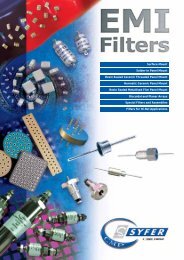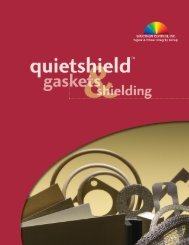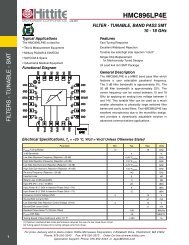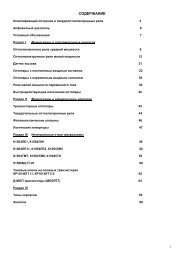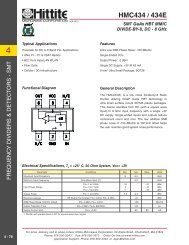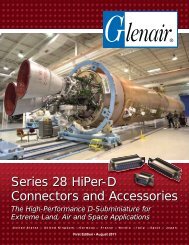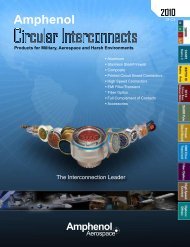HiRel Space Guide (Rev. A)
HiRel Space Guide (Rev. A)
HiRel Space Guide (Rev. A)
You also want an ePaper? Increase the reach of your titles
YUMPU automatically turns print PDFs into web optimized ePapers that Google loves.
<strong>Space</strong> Products <strong>Guide</strong>Overview/Table of ContentsTI-<strong>HiRel</strong> <strong>Space</strong> ProductsTo support the demanding nature of space applications TI andNational have combined product lines to create a strong andunited offering for space applications. Customers can expect nodisruption of service as a result of this merger and that TI/Nationalproducts will continue to be available. By combining our portfolioswe provide a complete signal chain solution for space.National customers can be assured:• No Obsolescence• No Part Number Changes• No Requalification• Continued new product developmentPotential applications:• Commercial and defensespace-based systems• Data processing• Flight critical control systems• Gas chromatographs• Particle detectors• Photometers• <strong>Space</strong>-based imaging and surveillance• Spectrometers• Wave analyzersFor more information onTI-<strong>HiRel</strong> space products, seewww.ti.com/space.Radiation Data is available atwww.ti.com/radiation.Radiation EffectsHigh-energy protons, electrons and charged particles in naturalspace environments can strongly affect the operation of electroniccircuits used in space applications.Radiation is energy in transit, taking the form of high-speedparticles and electromagnetic waves. We encounter electromagneticwaves every day. They make up our visible light, radio andtelevision waves, ultraviolet (UV) light and microwaves with alarge spectrum of energies. These examples of electromagneticwaves do not cause ionizations of atoms because they do notcarry enough energy to separate molecules or remove electronsfrom atoms.Ionizing radiation is radiation with enough energy so that duringan interaction with an atom, it can remove tightly bound electronsfrom their orbits, causing the atom to become charged or ionized.Examples are gamma rays, protons and neutrons.Table of Contents2-3 OverviewFeatured Products4 Power6 DSP7 Memory7 Data Converters11 Precision Amplifier11 Analog Front End12 Interface13 Clocks14 Low Dose Rate Tested Analog ProductsSelection Tables14 Low Dose Rate Tested Analog Products15 Power Management17 Amplifiers and Linear20 Data Converteres20 Interface21 Clocks/Buffers21 Memory21 Logic21 Digital Signal Processor22-23 Radiation Tolerant Die Products24 ResourcesThe most common radiation requirement in the aerospace designcommunity is total ionizing dose (TID), also known as total dose.Total dose irradiation is primarily caused by electrons and protonsthat penetrate into the silicon and can result in device degradationand/or device failure.Charge buildup affects the current-voltage characteristics of transistorsused in semiconductor circuits. Proper operation of a transistorrelies on the ability to switch it from a low-conductance (off)state to a high-conductance (on) state as the gate voltage passesthrough a threshold. Extended exposure to radiation can shiftthe threshold voltages making the transistors easier or harder toswitch. Radiation may also increase the leakage current, causingthe on and off states of the transistors to become less distinguishable.Either effect can ultimately cause circuit failure.<strong>HiRel</strong> performs total dose testing on space-qualified, QML Class-Vnew product releases in order to determine how much radiationour devices can absorb before device degradation occurs. The testresults for select devices are available at www.ti.com/radiation.2 | <strong>Space</strong> Products <strong>Guide</strong> 2013 Texas Instruments




